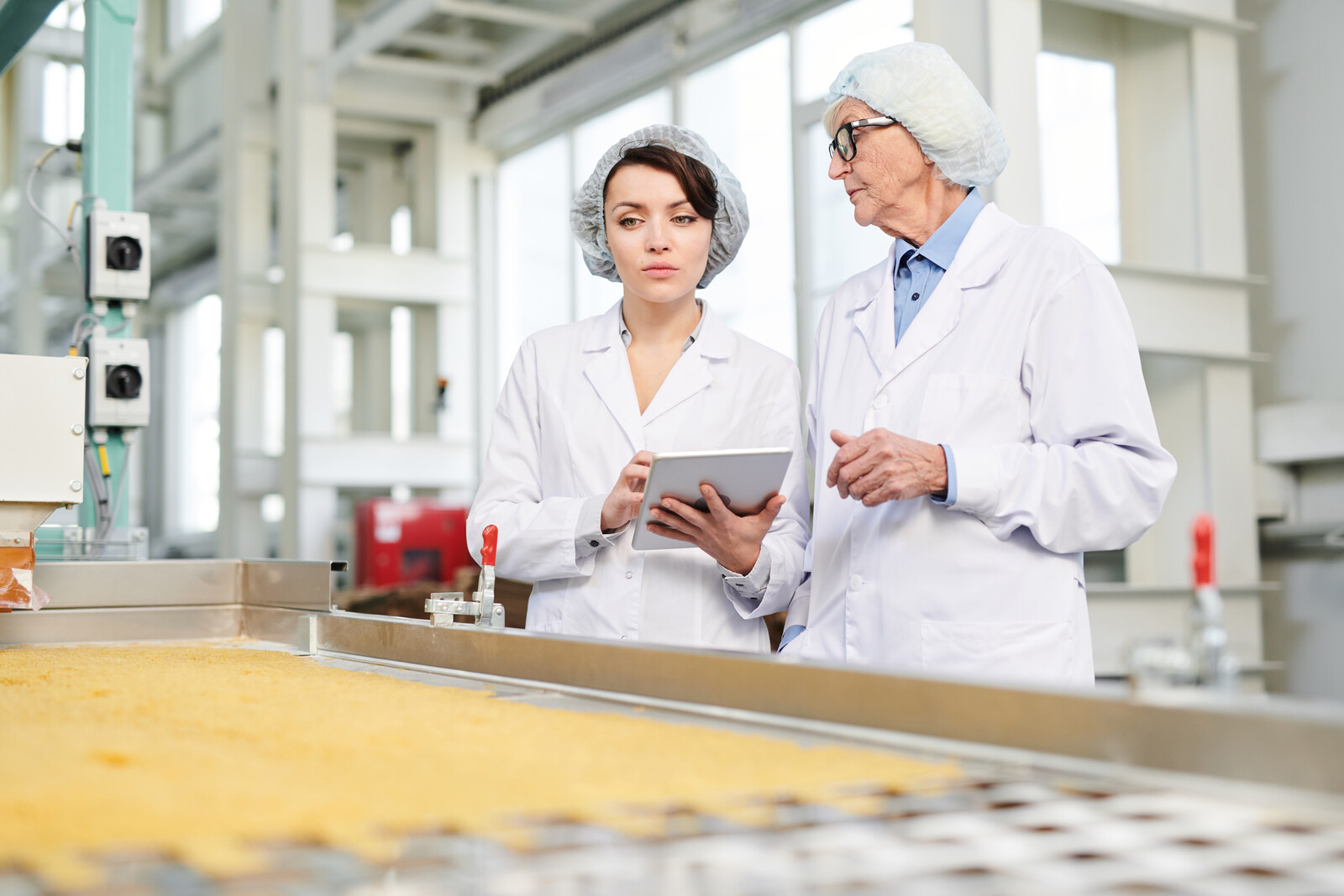
In July 2020, during the height of the coronavirus pandemic, the Food and Drug Administration (FDA) launched an initiative they had been working on for some time called “New Era of Smarter Food Safety Blueprint.” In this announcement, Stephen M. Hahn, M.D., who served as Commissioner of Food and Drugs in the FDA from December 2019 to January 2021, made a call to industry stakeholders to leverage new technologies and approaches to create a more digital, transparent and safer food system.
The concern for food safety is ubiquitous.
Certainly, you are familiar with food safety guidelines and food safety inspections that work towards minimizing or eliminating foodborne illnesses. Perhaps you know of an establishment or two that may have received health violations; or about incidents along the food distribution line that may have caused food contamination resulting in outbreaks.
On a global scale, the World Health Organization (WHO) estimates 600 million cases of foodborne illness, including 420,000 deaths due to foodborne illness annually. According to the Centers for Disease Control and Prevention (CDC), every year in the United States, “an estimated 48 million people get sick; 128,000 are hospitalized; and 3,000 die from foodborne diseases.”
In the FDA address, Mr. Hahn indicated that restaurants and other retail food outlets are one of the more frequently cited locations associated with outbreaks of foodborne illness. Several factors, or a combination of factors, contribute to health violations and foodborne illnesses, including archaic processes, unhygienic practices and time or temperature control. We don’t have to get into the nitty-gritty, but we definitely know that the consequences of health violations and food-borne illnesses can be dire. In most cases, it requires considerable effort and resources for restaurants to recover from the reputational damage, financial losses and other consequences that can occur when they have health violations. While some restaurants may overcome these challenges, others are not so lucky.
Chenhao Qian et al, in their article titled, “A perspective on data sharing in digital food safety systems” reveals that “the US Department of Agriculture (USDA) Economic Research Service (ERS) estimates that 15 pathogens that cause the most deaths in the United States lead to $15.5 billion economic loss (Hoffman 2015), the World Bank estimates that in low- and middle-income countries the annual loss in productivity and medical expenses due to unsafe food is $95 billion (Jaffee et al. 2019).”
These statistics – illness, death and financial loss – are alarming. As a restaurateur, it is your priority to ensure the implementation of and compliance to the recommended industry processes and food-handling protocols across all channels within your purview. You protect your consumers and your brand when you adhere to industry standards.
The New Era Blueprint states that the FDA’s ultimate goal is to bend the curve of foodborne illness by reducing the number of illnesses. Mr. Hahn, in his statement, affirmed that the FDA will work with industry to help modernize food safety at restaurants and other retail food outlets. He underscored the critical importance of rapidly tracing contaminated food to its source. “And when I say rapidly, I mean minutes, not days, weeks, or even longer,” he said.
You may wonder, how does one acquire accurate information so quickly?
The answer is technology.
This is the age of data. This is the age of a food revolution. Across the globe, industry experts widely concur that there is tremendous potential for enhancing food safety using technology. This modern approach is called digital food safety. It leverages technology and other tools to automate and digitize food safety tasks from traditional and manual practices to create a safer, traceable, more efficient food system.
Brand Benefits
Digital food safety is advantageous to all stakeholders in the restaurant business and significantly reduces the risk of food contamination and health violations. Utilizing digital tools saves time, minimizes errors, increases efficiencies and enhances profitability. Here are some of the practical ways that implementing digital food safety processes can benefit your brand.
More productive and accountable employees
You can easily customize digital checklists to ensure safety procedures are properly conducted, monitored, and enforced, thus creating a non-negotiable food safety culture. Employees are more invested in your success when they feel responsible and accountable for time-on tasks, like food orders, equipment monitoring, inventory and temperature checks. Digital systems are reliable, significantly faster, easier and more accurate than manual processes, eliminating risks, miscommunication and health violations.
Brand consistency and customer retention
Post pandemic, customers expect transparency; they want to see good audits and to dine at reputable establishments where safety protocols are being applied correctly and consistently. Implementing digital food safety measures is essential for attracting and retaining customers, who support companies that prioritize these efforts.
Additionally, deploying customer facing technology, such as QR codes and kiosks, that saves time and minimizes errors, also improves brand consistency.
Better self-audits
Using manual systems to audit often results in increased effort, time, errors, and expense. Using digital tools to build standardized and cost-effective quality assessments, help identify and fix problems before they become liabilities. These efficient and accurate internal auditing systems give your management team a holistic view across the enterprise, or monitor by location, to immediately spot and correct any food safety issues. This insight can help you prepare for official health and safety inspections.
Better reporting for quicker decision making
With technology, there is transparency and traceability. Therefore, management has real-time visibility over checklists and other tools. This provides you with countless opportunities including:
- the ability to measure training effectiveness for improved employee productivity;
- the assurance that all restaurants maximize compliance;
- proof that employees operate according to established SOPs;
- set benchmarks and rank locations according to your standards.
- analyzing and mining data
Will your establishment heed the FDA’s call to create a safe food system through technology?
MeazureUp is a digital tool that can help you to eradicate manual processes and transform your restaurants into fully functional digital spaces. It enhances food safety through streamlined processes, by automating, collecting and analyzing your restaurant’s data, so you can capture business insights and act on them quickly. Learn how you can monitor temperature, evaluate your operations and more, using MeazureUp’s convenient site audit and restaurant checklist apps. Schedule a demo today.

